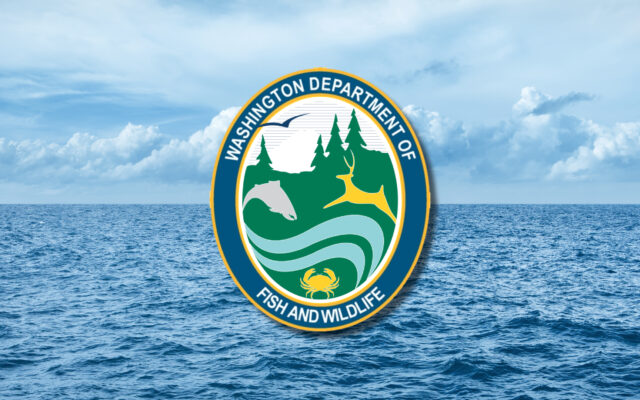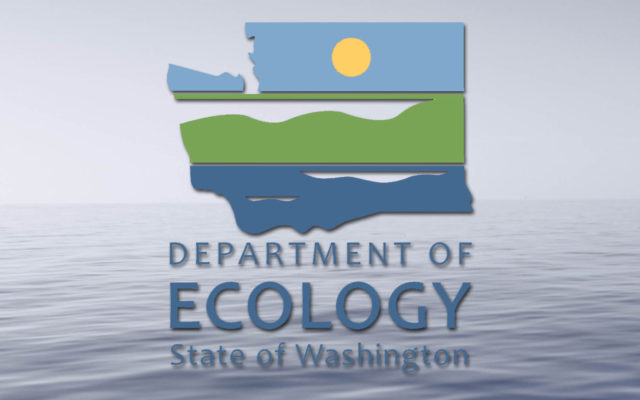Coastal halibut season opens May 2; Puget Sound fishery opens April 4

The Washington Department of Fish and Wildlife (WDFW) announced plans for the 2024 halibut fishing season, which will kick off April 4 in some Puget Sound areas and start May 2 along the coast.
The 2024 season is structured similarly to last season with Sekiu and Pillar Point (Marine Area 5) opening on the same date as the Eastern Strait of Juan de Fuca and Puget Sound (Marine Areas 6, 7, 8, 9, and 10).
“Compared to last year, anglers will see more opportunity for Pacific halibut,” said Lorna Wargo, WDFW intergovernmental ocean policy coordinator. “We continue to benefit from a stable quota, which supports expanded access to this highly desirable fish. In addition, we have responded to angler requests to add sablefish – black cod – to the daily limit on halibut days for the Strait of Juan de Fuca. Due to favorable ocean conditions for this species, the sablefish population is quite healthy.”
During the preseason planning process, stakeholders requested more early season opportunities when halibut is more available compared to late summer.
The annual limit during the 2024 halibut season will be increased to six halibut per angler. WDFW fishery managers have been cautious to avoid early closures but in recent years the quota hasn’t been achieved.
The recreational season is based on a statewide quota of 290,158 lbs. The annual catch quota of 1.65 million lbs. in 2024 is the result of an allocation that the International Pacific Halibut Commission (IPHC) approved Jan. 26 for fisheries in Washington, Oregon, and California.
In all marine areas open to halibut fishing, there is a one-fish daily catch limit and no minimum size restriction. Anglers may possess a maximum of two fish in any form while in the field and must record their catch on a WDFW catch record card.
New for 2024, the annual limit is six halibut per angler; a two-line catch record card (CRC) is available free of charge for those who have obtained a four-line CRC. Possession limit is two daily limits in any form, except only one daily limit while aboard the fishing vessel. Anglers cannot fish for, retain, possess, or land halibut into a port located within an area closed to halibut fishing, except anglers can land halibut that they lawfully retained in Marine Area 5 into a port within Marine Area 4 when Marine Area 4 is closed.
The halibut season details, as pending final implementation in federal rule, are listed below. Halibut fisheries are managed to a quota, and areas will close when the projected quotas are taken.
Anglers should check the WDFW website to ensure a specific area is open prior to fishing. Refer to the WDFW bottomfish and halibut webpage for information on recreational halibut regulations and seasons.
2024 Puget Sound halibut seasons
- Sekiu and Pillar Point (Marine Area 5) and East Strait of Juan de Fuca and Puget Sound (Marine Areas 6, 7, 8, 9 and 10) will be open from April 4 through June 30, seven days per week, if there is sufficient quota. If quota remains after June 30, then open to seven days per week in August and September. Puget Sound will be managed to an overall quota of 81,729 lbs.
Fishery managers remind anglers that barbless hooks are required for all species including halibut and bottomfish—except when using forage fish jig gear to target forage fish (herring, sandlance, anchovy, sardine and smelt). Refer to Marine Area Rules and Definitions in the Washington Sport Fishing Rules.
- Tacoma-Vashon Island, Hood Canal, and South Puget Sound (Marine Areas 11, 12, and 13) are closed to halibut fishing to protect threatened and endangered rockfish species.
2024 coastal halibut seasons
- Ilwaco (Marine Area 1): The all-depth fishery opens May 2, 5, 7, 9, 12, 14, 16, 19, 21, 23, 26, 30; June 2, 4, 6, 9, 11, 13, 16, 18, 20, 23, 25, 27, 30 if there is sufficient quota. If quota remains after June 30, then the fishery will open to seven days per week in August and September. The nearshore fishery is open on a Monday-through-Wednesday schedule beginning the first Monday after the all-depth fishery opens until the nearshore allocation is taken or Sept. 30, whichever comes first. Coordinates for the Columbia River nearshore fishery can be found on the WDFW halibut webpage. On days when the all-depth halibut fishery is closed, taking, retaining, possessing, or landing halibut on groundfish trips is only allowed in the nearshore area. The all-depth fishery will be managed to 18,112 lbs.; the nearshore quota is 500 lbs.
- Westport-Ocean Shores (Marine Area 2): The all-depth fishery opens May 2, 5, 7, 9,12,14,16,19, 21, 23, 28, 30. If sufficient quota remains the all-depth fishery will open June 13, 16, 18, 20, 23, 25, 27, 30 depending on available quota. If quota remains after June 30, then open up to seven days per week in August and September. This area will be managed to an overall quota of 67,074 lbs.
- Neah Bay and La Push (Marine Areas 3 and 4) opens May 2, 3, 4, 9, 10, 11, 16, 17, 18, 24, 26, 30, 31; June 1, 2, 6, 7, 8, 9, 13, 14, 15,16, 20, 21, 22, 23, 27, 28, 29, 30. All openings are subject to quota availability. If quota remains after June 30, then open to seven days per week in August and September. The combined quota for both areas is 132,366 lbs. Anglers cannot fish for, retain, possess, or land halibut into a port located within an area closed to halibut fishing, except anglers can land halibut they lawfully retained in Marine Area 5 into a port within Marine Area 4 when Marine Area 4 is closed.
Fishing regulations include depth restrictions and area closures designed to reduce encounters with yelloweye rockfish, which must be released under state and federal law. Anglers are reminded that a descending device must be on board vessels and rigged for immediate use when fishing for or possessing bottomfish and halibut.
Refer to WDFW’s webpage for information about descending devices.
WDFW reminds anglers that creel staff will be present at many coastal boat launches and access sites to gather additional information regarding fishing and crabbing trips. Anglers may be interviewed by multiple staff members who collect different sets of information based on the species caught. The information these staff members collect is important for fishery management.
You Might Also Like



